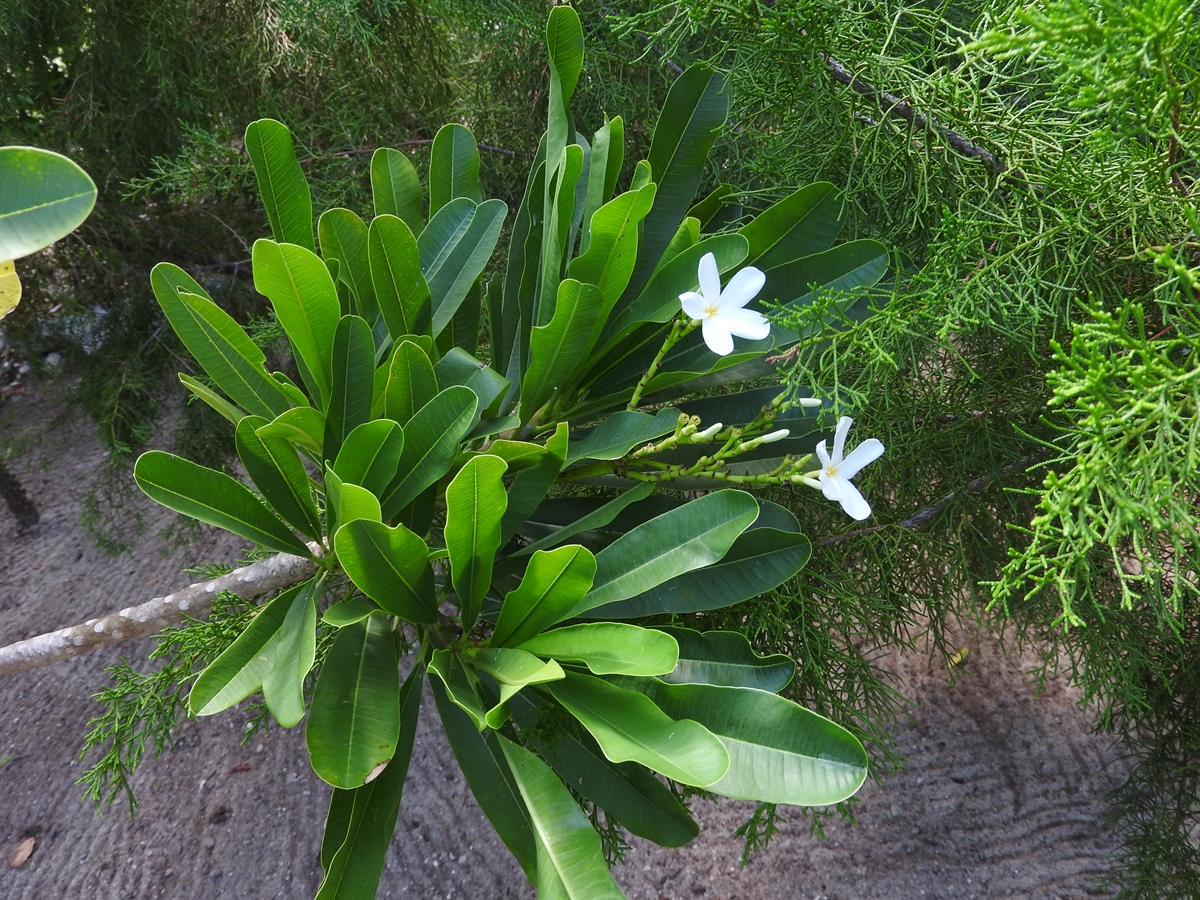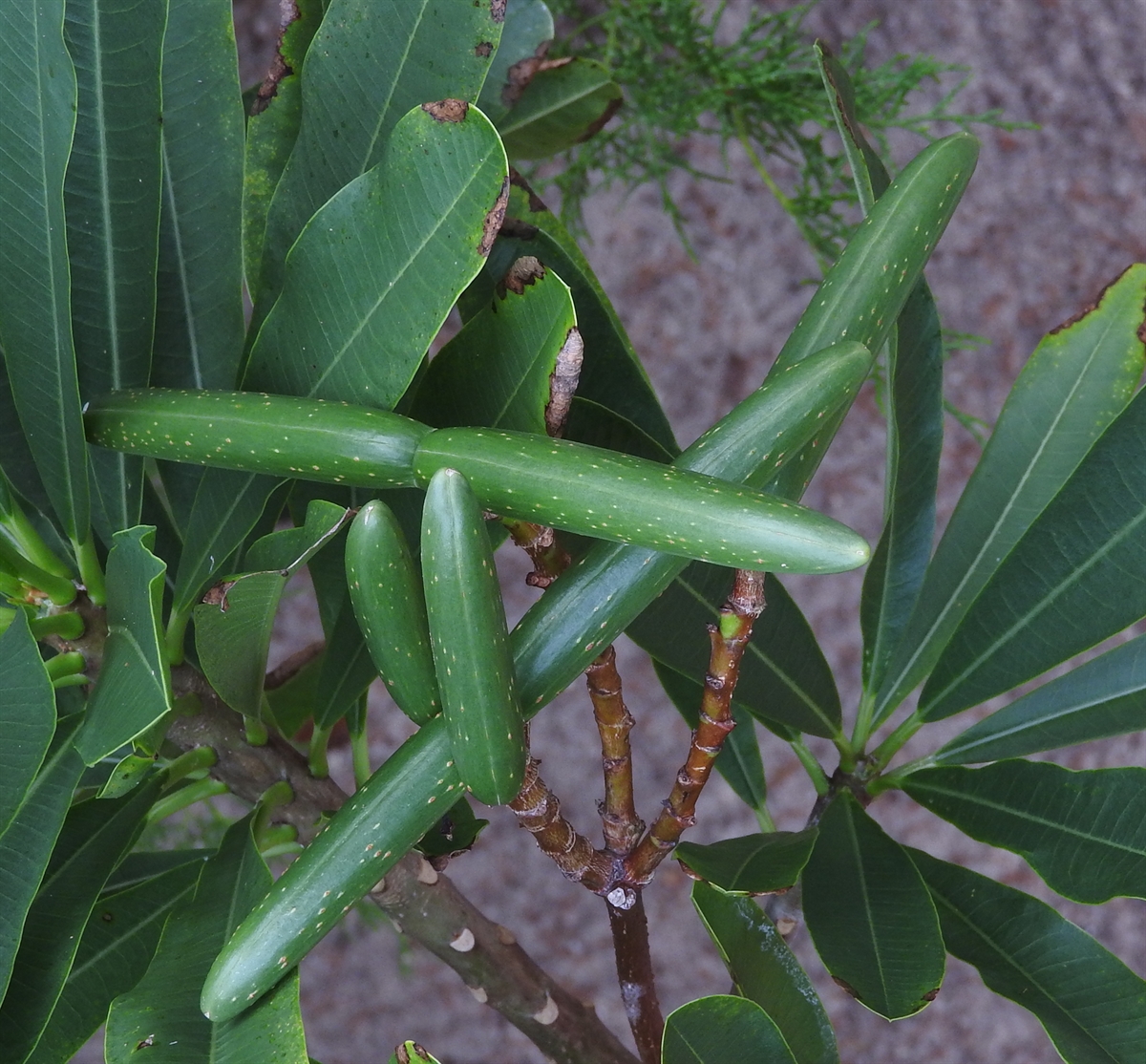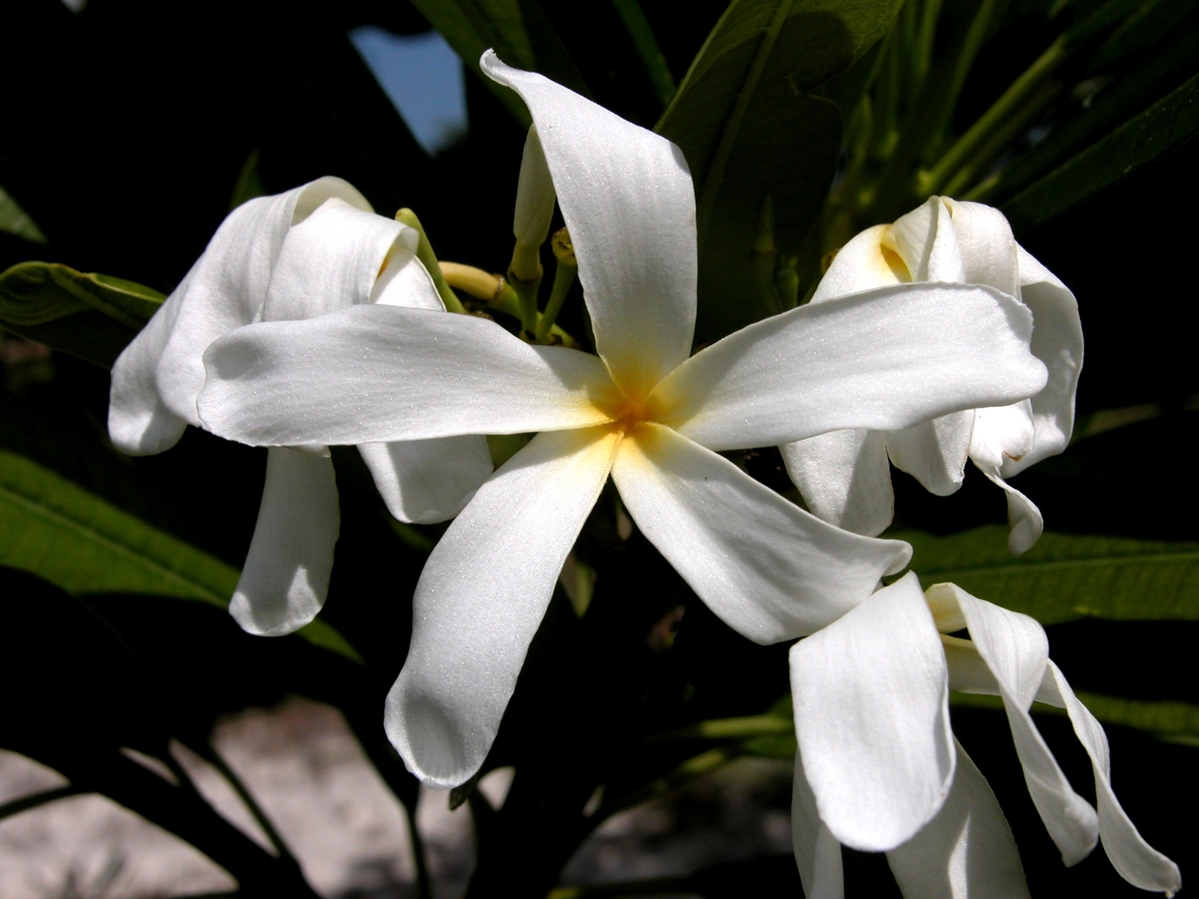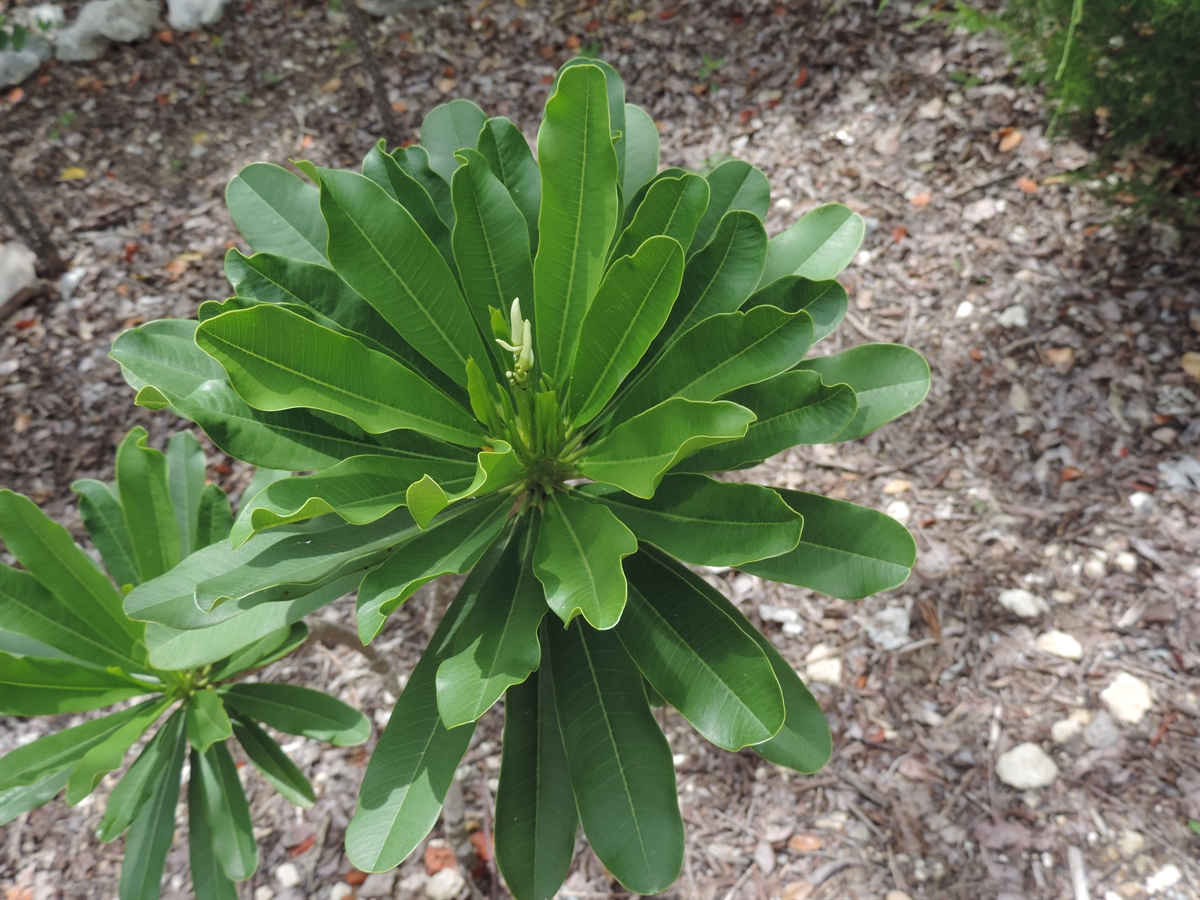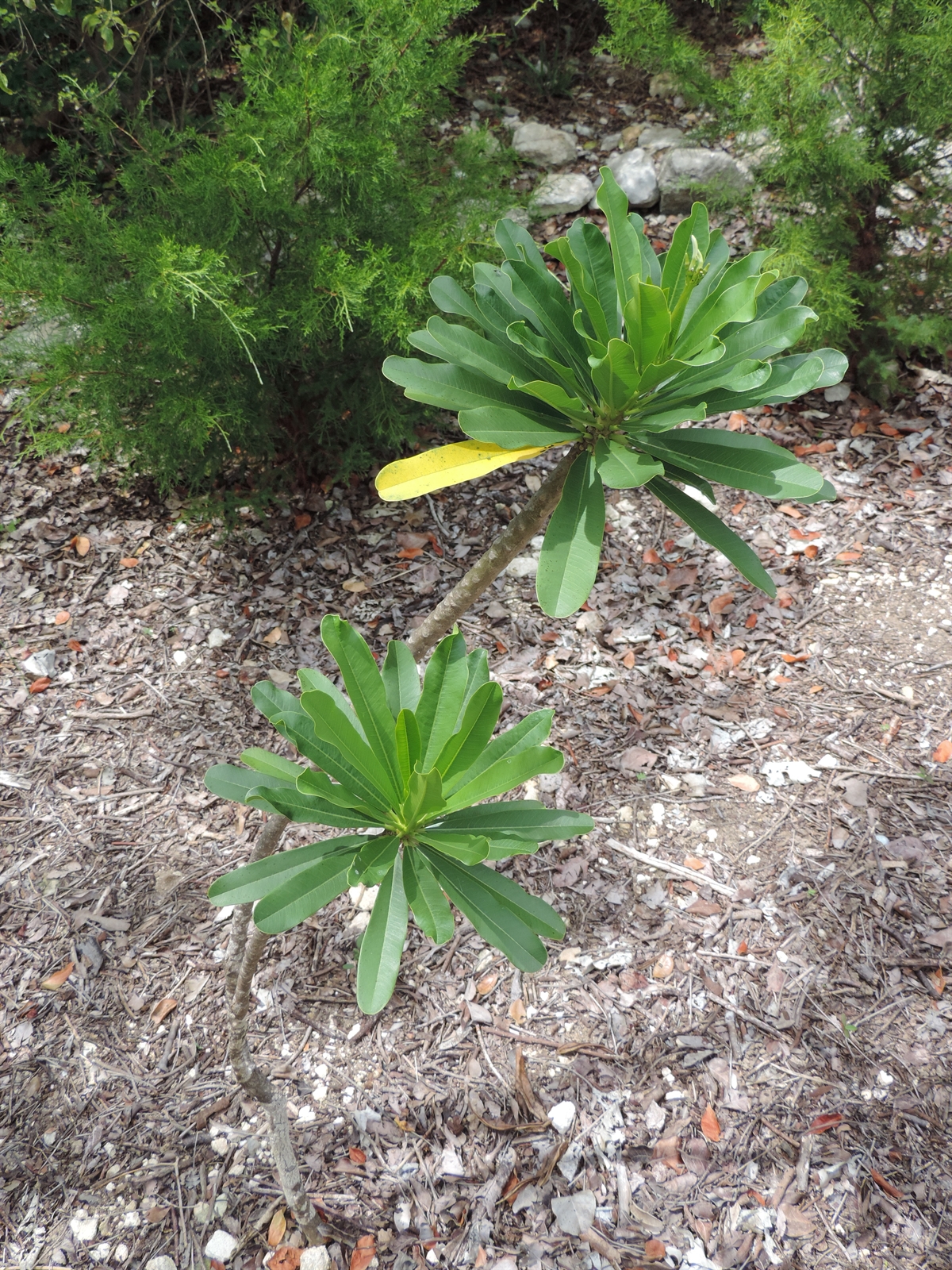Habit: Plumeria obtusa grows as thin semi-succulent shrub up to 8 meters in height with a trunk to 20 cm in diameter. The bark is whitish gray sometimes red. The leaves are arranged alternately, oblong, to 25 cm long, 8 cm wide, and clustered at branch tips. The leaves have a rotundate leaf apex and a slightly wavy margin. Vegetation produces a milky sap.
The complete, perfect, actinomorphic flowers are arranged in umbel–like panicles arising in leaf axils. The calyx has 5 unfused, greenish sepals. The corolla has 5 white (with yellow center) petals that are fused forming a tube with the lobes overlapping at their base to one side forming a pinwheel shape. There are 5 stamens fused to the corolla tube. The ovary is superior and has two locules and many ovules. The fruit is a follicle that turns brown at maturity. The seeds have tufts of hairs at one end to assist in dispersal.
Habitat: Plumeria obtusa grows in Dry Broadleaf Evergreen Formation – Forest/Shrubland (coppice or scrublands).
Distribution: Plumeria obtusa occurs throughout the Lucayan Archipelago, Cuba, Hispaniola and Central America.
Medicinal/Cultural/Economic usage: Plumeria obtusa is not known to be used medicinally in the Lucayan Archipelago.
It is used in the horticultural industry.
